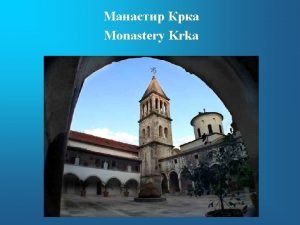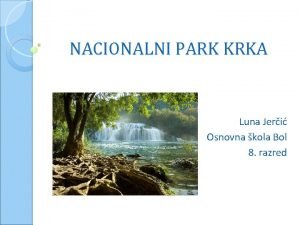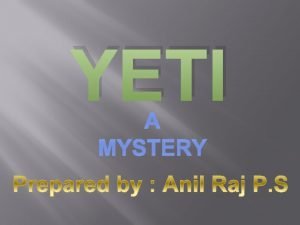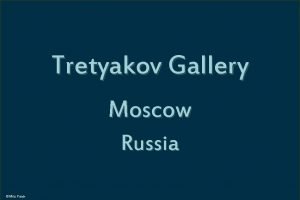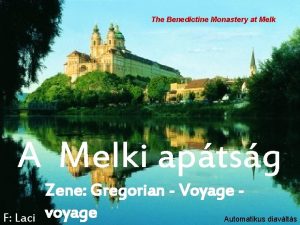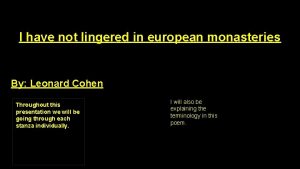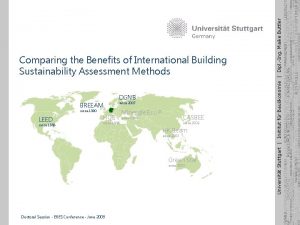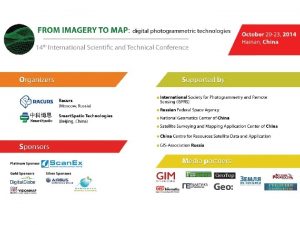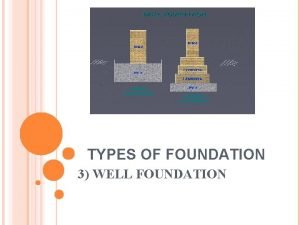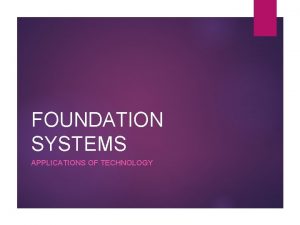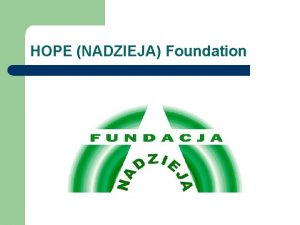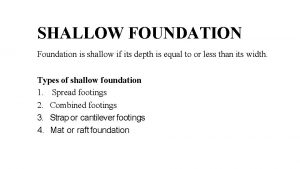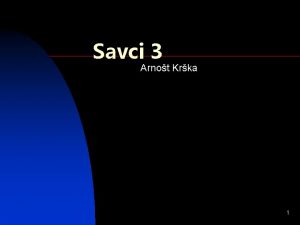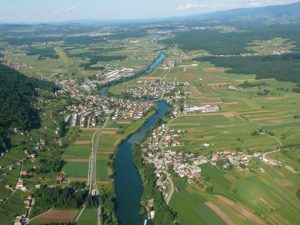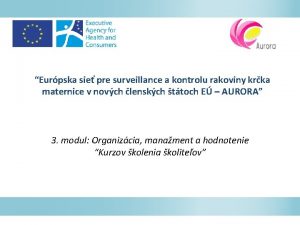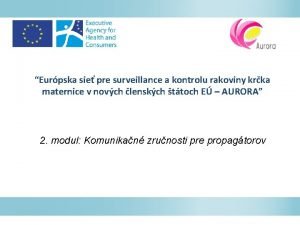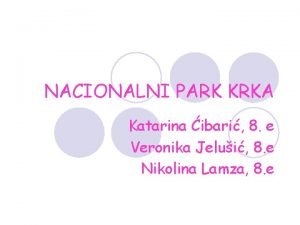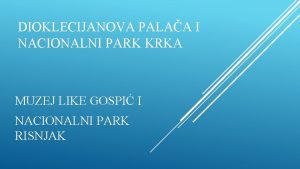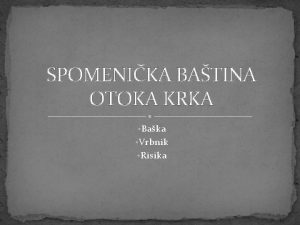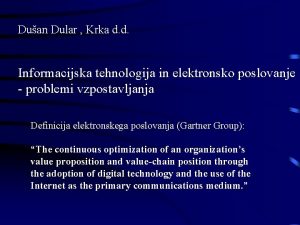Monastery Krka MONASTERY KRKA Since its foundation the





















- Slides: 21

Манастир Крка Monastery Krka
















MONASTERY KRKA Since its foundation, the monastery Krka (1345) has been a spiritual and cultural centre of Dalmatian Diocese. Beside monasteries Krupa (1317) and Dragović (1395), monastery Krka is a pillar of Orthodoxy as well as guardian of faith and culture of Dalmatian Serbs. The monastery was founded by Jelena Šubić, a daughter of St. Stephen of Dečani and sister of tsar Dušan (1331 1355). Early Christian catacombs situated in the crypt beneath the altar of the monastery church, bear witness to the fact that monastery Krka was built on the place where St. Apostle Paul and his disciples preached Christianity in Dalmatia. In 1876, Bishop Stefan turned part of the cave into a monastery chapel devoted to St. Sava, the first enlightener and Serbian Teacher of Orthodoxy. Since its founding, the monastery Krka has led an existence of Orthodox Serbs of North Dalmatia: when the people suffered, the monastery also went through suffering, when the people experienced spiritual resurrection; the monastery went through spiritual revival also. Regardless of its numerous historical tribulations, steadiness of monastery Krka shows that, by God’s grace, this sanctuary is founded on St. Apostle’s preaching and Christian martyrdom. Furthermore, Krka’s steadiness has been shown and proved by its patron St. Archangel Michael. Being a Leader of the armies of heaven, Archangel Michael guarded and still guards this sanctuary.

In 1615, in accordance with ancient patristic Tradition and St. Sava’s teaching, Theological Seminary was established in the monastery. Many future bishops, priests, monks, as well as people employed in culture and education, significant not only for the history of this sanctuary, and life of Serbian people in Dalmatia, but for the life of the whole Serbian Orthodox Church, gained their degrees in this school. The monastery Krka com plexconsists of the monastery church, dinning room, refectories, the new building of the Seminary of the Holy Three Hieararchs and subsidiary buildings. Most of the monastery refectories were built at the end of the XVIII century. Throughout its centu ries long history, the monastery church of St. Archangel Michael has undergone considerable changes and adaptation. Essentially, the church is divided into two parts: the eastern and western. The eastern part consists of the central part of the church above which is a dome and a big altar space. The western part is quite narrow, it is longer than the eastern one and aslant towards the southern side compared to the church's main foundation.

Krka monastery iconostasis consists out of 55 icons made between XV and XVIII/ XIX century. Monastery’s rich history is also revealed by its treasury. It consists of more than 2, 000 exhibits such as: ancient Orthodox icons, liturgical vessels and vestments, liturgical books in manuscript dating from XIII and XVIII century. Throughout its long history, this monastery was a transcribing center. The Krka’s Library also has many old and extremely valuable printed books. In the monastery Krka there is an entire gallery of artistic portraits of church dignitaries. Considering their number and artistic manufacture, the valuables of the monastery Krka are among the most richest treasuries of the Serbian Orthodox Church, right after the treasuries of the monasteries of Chilandar, Dečani and the Cetinje. Gathering of Krka’s brotherhood have begun in 1998, when the monks returned to the monastery. In spite of very difficult conditions, their arrival to the monastery managed to subsist and revive the spiritual life in this region. The great significance in the life of Krka monastery has the Seminary of the Holy Three Hierarchs. To be more precise, in 2001 the Seminary restarted its work, meaning its spiritual and educational mission, as in Dalmatia, so as in the whole Serbian Orthodox Church.


 Krka monastery
Krka monastery Np krka ppt
Np krka ppt Mummified yeti in bhutan monastery
Mummified yeti in bhutan monastery Andrei rubkev
Andrei rubkev During the summer months the monastery very busy
During the summer months the monastery very busy Krupa monastery
Krupa monastery Leonard cohen monastery
Leonard cohen monastery Pad foundation section
Pad foundation section Foundation standard 1 academic foundation
Foundation standard 1 academic foundation Its not easy but its worth it
Its not easy but its worth it Weather sunny cloudy rainy windy
Weather sunny cloudy rainy windy If its a square it's a sonnet summary
If its a square it's a sonnet summary The graceful slopes glow even clearer
The graceful slopes glow even clearer Its halloween its halloween the moon is full and bright
Its halloween its halloween the moon is full and bright When a train increases its velocity its momentum
When a train increases its velocity its momentum Thế nào là sự mỏi cơ
Thế nào là sự mỏi cơ Trời xanh đây là của chúng ta thể thơ
Trời xanh đây là của chúng ta thể thơ Chó sói
Chó sói Thiếu nhi thế giới liên hoan
Thiếu nhi thế giới liên hoan Fecboak
Fecboak Một số thể thơ truyền thống
Một số thể thơ truyền thống Thế nào là hệ số cao nhất
Thế nào là hệ số cao nhất
